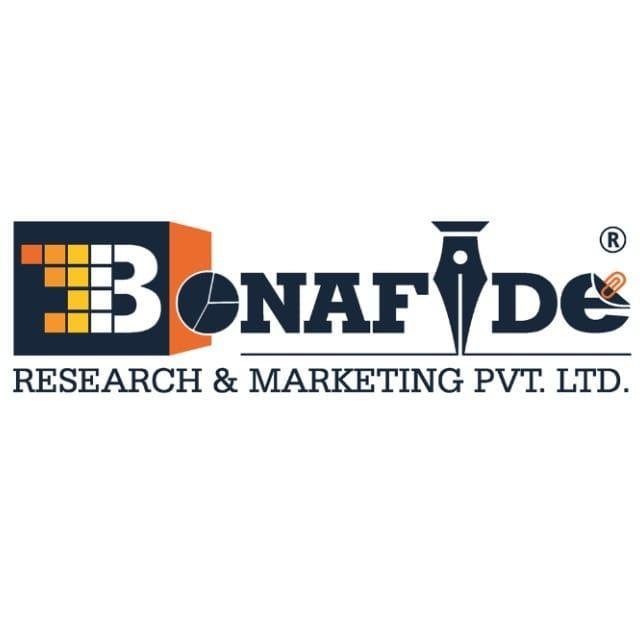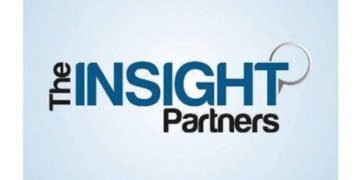
The Global Zero Trust Architecture market was valued at more than USD 20.16 Billion in 2024, growing with 14.93% CAGR by 2025-30.
The Global Zero Trust Architecture ZTA Market has transitioned from a specialized cybersecurity idea into an established global security model as businesses across the globe adjust to cloud usage, remote employment, and more advanced cyber threats. Its aim is to safeguard digital resources by implementing the motto of never trust, always verify, which ensures that every user, device, and application regardless of being internal or external to the network is constantly authenticated, authorized, and monitored prior to granting entry. The area of focus includes enterprises, government institutions, essential infrastructure, and small to medium-sized enterprises across all areas, tackling security in hybrid, multi-cloud, and on-site environments. The idea was first put forth by Forrester Research in 2010 and gained momentum as traditional perimeter-based protections proved ineffective against insider threats, ransomware, and supply chain assaults. Initial challenges comprised the complexity of integrating with old systems, expensive implementation costs, and resistance to cultural shifts in IT practices. To tackle these issues, providers created various ZTA models network-focused micro-segmentation, identity-focused access control, and application-focused verification designed to meet differing organizational requirements. At present, ZTA is utilized by sectors like finance, healthcare, defense, and technology, and is especially prevalent in areas with strict compliance regulations such as North America, Europe, and certain regions in Asia-Pacific. On a technical level, Zero Trust Architecture functions as a cybersecurity structure that removes implicit trust, utilizing ongoing verification, least-privilege access, and immediate threat detection across all layers of the network. In practical scenarios, it stops unauthorized lateral movements within networks, diminishes the impact of breaches, and protects sensitive information offering advantages to organizations through smaller attack surfaces, better compliance, and strengthened resilience. Its effectiveness is amplified when paired with robust identity and access management IAM, endpoint security, and analytics.
Current advancements focus on identity-first ZTNA, the convergence of SASE, micro-segmentation at the level of workloads, and AI-led risk assessment that continually adjusts policies. According to the research report “Global Zero Trust Architecture Market Outlook, 2030,” published by Bonafide Research, the Global Zero Trust Architecture market was valued at more than USD 20.16 Billion in 2024, and expected to reach a market size of more than USD 45.71 Billion by 2030 with the AGR of 14.93% from 2025-30. Vendors are introducing passkey/FIDO2 MFA, posture-aware access for devices that are not managed, and unified policy engines that cover cloud, on-premises, and edge environments. Key companies in this space include Microsoft, which offers Entra ID, Defender, and Purview to provide comprehensive identity, endpoint, and data governance helping clients consolidate their tools. Cisco provides powerful MFA and network micro-segmentation with its Duo, Secure Access, and ISE solutions. Zscaler delivers ZTNA and SSE solutions from the cloud to replace traditional VPNs, while Palo Alto Networks integrates NGFW, SSE, and identity-aware access through Prisma Access and ZTNA 2.0. Okta supports least-privilege principles with adaptive MFA and SSO through its Workforce and Customer Identity offerings. Cloudflare’s Zero Trust platform secures internet, SaaS, and private applications at the edge. Google’s BeyondCorp Enterprise operationalizes access based on device and context awareness, following its own internal model. Opportunities are increasing as organizations move away from fragile perimeter/VPN setups, secure hybrid and multi-cloud environments, onboard external parties without excessive provisioning, and apply Zero Trust principles to OT/IoT. Managed ZT solutions tailored for small-to-medium businesses and regulated industries such as finance, healthcare, and the public sector are particularly appealing due to pressures related to compliance and a shortage of skilled professionals. Compliance requirements and certifications heavily influence purchasing decisions.
For more insights: https://www.bonafideresearch.com/product/250349221/global-zero-trust-architecture-market
The global Zero Trust Architecture market includes North America, Europe, Asia-Pacific, Latin America, and the Middle East & Africa, with each area playing a different role in how it is adopted and developed. North America, mainly represented by the United States and Canada, has the largest market share, thanks to early adoption of cloud technologies, well-established cybersecurity frameworks, and stringent regulatory requirements such as NIST SP 800-207, HIPAA, and CCPA. The notable presence of top vendors and substantial investments in AI-powered security solutions in this area further boost its growth. Europe trails closely behind, driven by the implementation of GDPR, the EU Cybersecurity Act, and specific regulations in finance, healthcare, and essential services. Nations including the UK, Germany, and France are leading in applying ZTA to secure hybrid work environments and manage sensitive information across borders. Asia-Pacific is experiencing the fastest expansion, fueled by swift digital advancement, increasing cloud usage, and government-supported cybersecurity plans in China, Japan, India, South Korea, and Australia. The growing number of small and medium-sized enterprises, along with large firms, is showing a rising interest in ZTA to tackle increasing ransomware and government-related threats. Latin America, primarily through Brazil and Mexico, is observing steady development as companies update their IT systems, embrace cloud services, and react to changing data protection regulations. Although financial resources may be tighter, the transition to managed security services is facilitating wider adoption of ZTA. The Middle East & Africa, with major markets like the UAE, Saudi Arabia, and South Africa, are making significant investments in Zero Trust to safeguard critical infrastructure, financial sectors, and government operations, frequently aligning with their national cybersecurity strategies. Across all regions, adoption is influenced by regulatory frameworks, threat scenarios, and the rate of digital innovation.
For more insights: https://www.bonafideresearch.com/product/250349224/asia-pacific-zero-trust-architecture-market
The global Zero Trust Architecture ZTA market by application is divided into network security, data security, application security, endpoint security, and cloud security, each focusing on essential aspects of contemporary cybersecurity. In the context of a Zero Trust framework, network security emphasizes micro-segmentation, access controls that are aware of user identity, and ongoing traffic monitoring to inhibit lateral movements across corporate and hybrid networks. It guarantees that authenticated individuals can access only the network segments critical for their responsibilities. Data security employs encryption techniques, rights management, and contextual access rules to safeguard sensitive data whether it is stored, being transferred, or actively used while ensuring adherence to regulations such as GDPR, HIPAA, and PCI DSS, thus lowering the chance of data breach incidents. Application security implements least-privilege access along with continuous verification for both on-site and SaaS applications, working with identity and access management IAM systems and API gateways to prevent unauthorized use and identify irregular activities in real-time. Endpoint security expands the principles of Zero Trust to devices, whether they are company-owned or personal, by validating the state of the device, enforcing adaptive multi-factor authentication, and collaborating with endpoint detection and response EDR tools to quickly isolate compromised devices. Cloud security modifies these security measures for multi-cloud and hybrid infrastructures, utilizing Secure Access Service Edge SASE, Cloud Access Security Brokers CASB, and workload micro-segmentation to secure assets regardless of where they are hosted. These application areas collectively establish a multi-layered, identity-focused defense system that reduces attack surfaces, enhances containment of breaches, and facilitates secure digital transformation. North America takes the lead in comprehensive ZTA implementations across all five domains, Europe focuses on data and application security to meet compliance requirements, while Asia-Pacific experiences swift growth in cloud and endpoint security to back mobile-first and remote work approaches.
For more insights: https://www.bonafideresearch.com/product/250349228/south-america-and-middle-east-and-africa-zero-trust-architecture-market
The global Zero Trust Architecture ZTA market by end use is divided into BFSI, healthcare, IT and telecom, government and defense, retail & e‐commerce, and others each segment having unique security focuses and motives for adoption. BFSI banking, financial services, and insurance stands out as a primary adopter, utilizing ZTA to safeguard valuable financial information, facilitate secure online banking, and fulfill strict compliance requirements such as PCI DSS and GDPR. Healthcare is swiftly advancing its implementation of ZTA to protect electronic health records EHRs, secure telehealth services, and adhere to HIPAA and other patient privacy regulations, especially with the rise of ransomware and IoT-connected medical devices increasing the potential for attacks. IT and telecom organizations utilize ZTA to secure extensive, distributed networks, safeguard client data, and maintain service reliability across cloud, edge, and 5G technologies. Government and defense organizations apply ZTA to protect confidential data, secure communications between agencies, and comply with national cybersecurity standards like NIST SP 800-207, often combining it with identity-based access for both civilian and military applications. Retail & e-commerce businesses implement ZTA to secure payment transactions, protect customer personally identifiable information PII, and prevent fraud in multi-channel settings, particularly during peak shopping times. The others category includes manufacturing and industrial companies protecting operational technology OT and IoT devices; educational institutions safeguarding student information and online learning systems; media and entertainment firms securing digital assets and intellectual property; transportation and logistics businesses protecting connected fleets and supply chain data; energy and utility providers shielding essential infrastructure from cyber-physical dangers; and hospitality and travel industries ensuring secure booking systems and customer loyalty programs. In all end-use categories, the shift to ZTA is motivated by the necessity to counter insider threats, secure hybrid work environments, and comply with changing regulations.
For more insights: https://www.bonafideresearch.com/product/6503492201/united-states-zero-trust-architecture
The global Zero Trust Architecture ZTA sector solution is divided into software and services, with each having a unique function in aiding organizations to adopt and uphold Zero Trust principles. Software solutions constitute the technological foundation of ZTA, including identity and access management IAM platforms, zero trust network access ZTNA tools, micro-segmentation software, endpoint security agents, cloud access security brokers CASB, and security analytics platforms. These solutions enforce constant authentication, minimum privilege access, and real-time surveillance across networks, applications, and devices. They are generally implemented as cloud-native, on-premises, or hybrid models, working alongside existing IT systems to offer centralized policy management and automated threat response. The software sector leads in market share due to the scalability, automation, and integration features it provides, making it critical for organizations moving from perimeter-based security to identity-focused frameworks. Services include consulting, integration, training, and managed security services MSS, which assist organizations in effectively designing, deploying, and operating Zero Trust frameworks. Consulting and integration services support businesses through readiness assessments, architecture development, and technology choice, ensuring compliance with regulations such as NIST SP 800-207, GDPR, HIPAA, and PCI DSS. Managed services deliver continuous surveillance, incident management, and policy improvement, which is especially beneficial for small to mid-sized enterprises that lack in-house expertise. Training services develop internal skills, assisting IT teams and end-users in adjusting to new access controls and security processes. The services segment is experiencing rapid growth as ZTA adoption rises in areas and sectors with limited cybersecurity experience, where expert assistance speeds up implementation and lowers operational risks. Patterns of regional adoption indicate that North America and Europe are at the forefront of software utilization due to developed IT environments and the presence of vendors, while Asia-Pacific and developing markets are increasing demand for services to close skills gaps and adhere to compliance requirements.
The global market for Zero Trust Architecture ZTA by deployment is divided into on-premises and cloud-based models, each presenting unique benefits, reasons for adoption, and fit for various business requirements. On-premises deployment means that organizations host Zero Trust solutions within their own data centers, which allows companies to manage infrastructure, security protocols, and sensitive information fully. This system is generally favored by sectors with stringent regulatory or data residency obligations such as government agencies, defense, and specific financial organizations where meeting compliance, customizing solutions, and integrating with older systems are essential. On-premises ZTA typically facilitates highly specific micro-segmentation, advanced control of network access, and connections with proprietary software, but it demands considerable initial investment, knowledgeable IT personnel, and continuous upkeep. Cloud-based deployment provides Zero Trust functionalities via Software-as-a-Service SaaS or cloud-native systems, allowing for quick expansion, diminished capital costs, and smoother integration with dispersed teams and multi-cloud settings. This approach is gaining traction among organizations that are adopting remote work, hybrid IT setups, and digital changes, as it supports consistent policy application across users, devices, and applications, regardless of their location. Cloud-based ZTA solutions usually work well with Secure Access Service Edge SASE, identity-as-a-service IDaaS, and AI-enhanced threat analysis, allowing for continuous verification and flexible access management without needing extensive on-site infrastructure. North America and Europe exhibit a strong acceptance of both models, with on-premises being prevalent in regulated fields and cloud-based dominating in technology, retail, and services; the Asia-Pacific region is experiencing rapid growth in cloud-based implementations due to mobile-first strategies and cost savings, while emerging markets typically choose hybrid methods to balance compliance with flexibility.
The global Zero Trust Architecture ZTA market by enterprise size is broken down into small and medium-sized enterprises SMEs and large enterprises, each having unique factors for adoption, hurdles, and preferences for solutions. SMEs are more frequently adopting ZTA to defend against increasing cyber threats, particularly ransomware and phishing, since they typically do not possess the extensive perimeter defenses and specialized security teams that larger firms have. For SMEs, cloud-based ZTA options are especially appealing because they feature lower initial costs, scalability, and ease of integration with current SaaS applications. Managed security services and straightforward, identity-focused platforms help address skill shortages, enabling SMEs to apply continuous authentication, device posture evaluations, and least-privilege access without significant infrastructure expenses. Adhering to regulations like GDPR, HIPAA, or PCI DSS serves as another incentive, as ZTA offers a well-organized framework to fulfill audit and data protection standards effectively. On the flip side, large enterprises generally function within intricate, hybrid IT setups that encompass on-premises data centers, numerous public clouds, and globally spread workforces. Their ZTA installations are frequently multi-layered, combining advanced identity and access management IAM, micro-segmentation, endpoint detection and response EDR, and AI-based threat analytics. Large organizations focus on extensive customization, compatibility with legacy systems, and centralized policy management to protect sensitive data, intellectual property, and critical operations. They also encounter increased compliance requirements across various regions, making ZTA vital for maintaining consistent security policy enforcement and rapid incident management. Regional trends indicate that SMEs in the Asia-Pacific and Latin America regions are pushing the need for affordable, cloud-native ZTA, while the uptake in North America and Europe is strong among large enterprises in regulated industries like BFSI, healthcare, and government.
For more insights: https://www.bonafideresearch.com/product/6503492207/australia-zero-trust-architecture
Considered in this report
• Historic year: 2019
• Base year: 2024
• Estimated year: 2025
• Forecast year: 2030
Aspects covered in this report
• Global Zero Trust Architecture Market with its value and forecast along with its segments
• Various drivers and challenges
• On-going trends and developments
• Top profiled companies
• Strategic recommendation
Regions & Countries covered in the report:
•Asia-Pacific: South Korea, China, India, Japan
•North America: United States, Canada
•Europe: Germany, France, United Kingdom, Italy
•South America: Brazil, Argentina
•Middle East & Africa: UAE, South Africa, Saudi Arabia
By Application
• Network Security
• Data Security
• Application Security
• Endpoint Security
• Cloud Security
By End Use
• BFSI
• Healthcare
• IT and telecom
• Government and defense
• Retail & E-commerce
• Others Manufacturing & Industrial, Education Schools, Colleges, and Universities, Media & Entertainment, Transportation & Logistics, Energy & Utilities, Hospitality & Travel
By Solution
• Software
• Services
By Deployment
• On-Premises
• Cloud-based
By Enterprise Size
• SME
• Large enterprises
Contact Us:
Steven Thomas – Sales & Marketing Manager
E-mail: sales@bonafideresearch.com
Asia-Pacific: +91 7878231309
Europe: +44 20 8089 0049
North America: +1 201 793 8545
https://www.bonafideresearch.com/
Bonafide Research is the fastest-growing global market research and consulting company, providing syndicated research reports, customized research reports, and consulting services to a range of verticals. Bonafide Research stands out as a contemporary market research company, renowned for its unparalleled resilience and integrated approach. With an extensive database of more than 32000 reports from 60 countries and expertise across 11 diverse industry domains and even assist the companies in spectrum of services, including designing their market assessment, market entry strategies, and consumer behavior analysis etc. Since last 10 years, we have served close to 1000+ clients and it includes fortune 500 companies across the globe. Bonafide has continuously made efforts to evolve and enhance the report quality with each passing day. Bonafide Research has a strong base of analysts and consultants from assorted areas of expertise who track the latest economic, demographic, trade, and market data globally and help clients make informed business decisions. They periodically update their market research studies to ensure that their clients get the most recent, relevant, actionable, and valuable information for strategy development and to extract tangible results.
This release was published on openPR.















